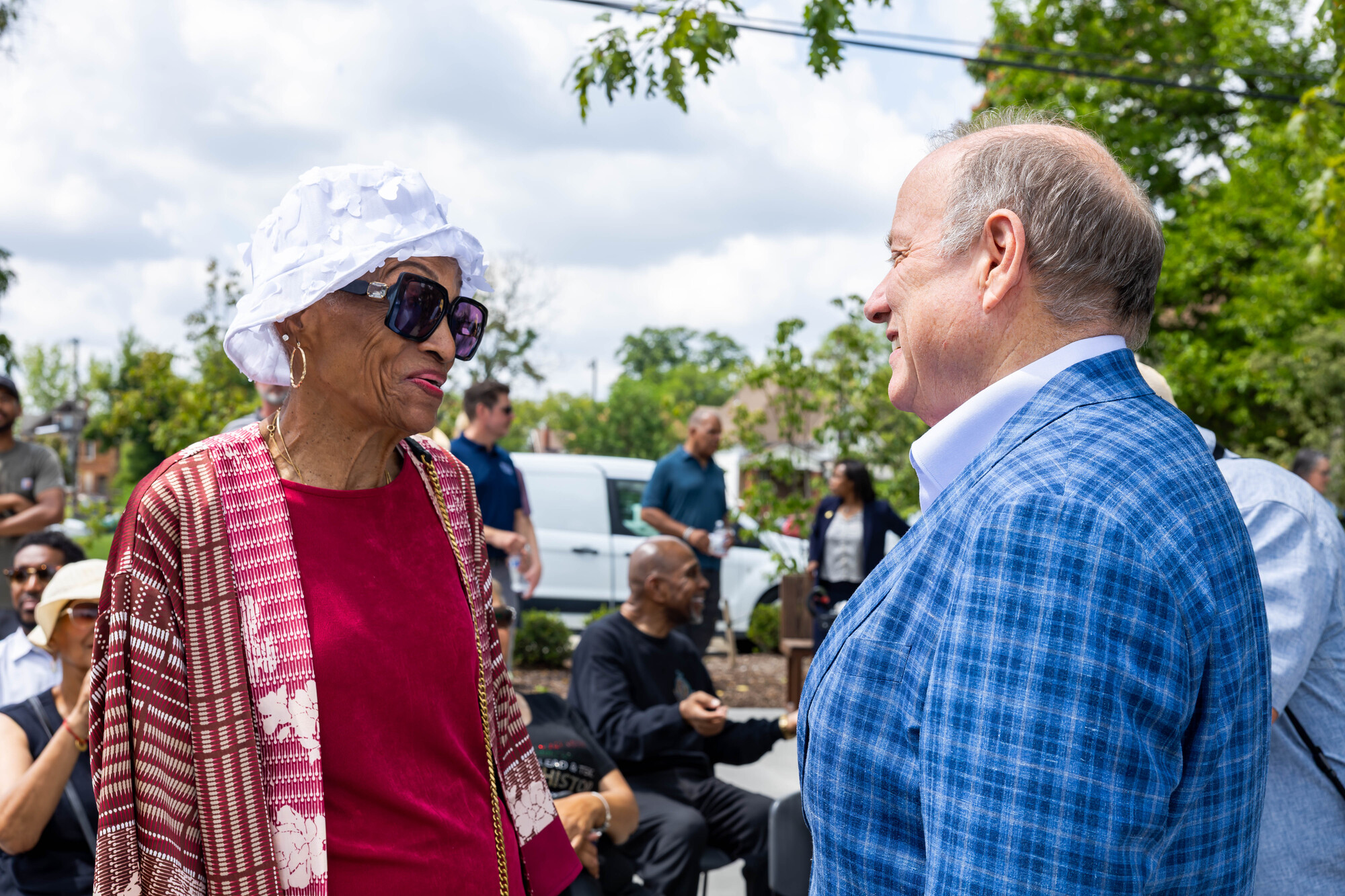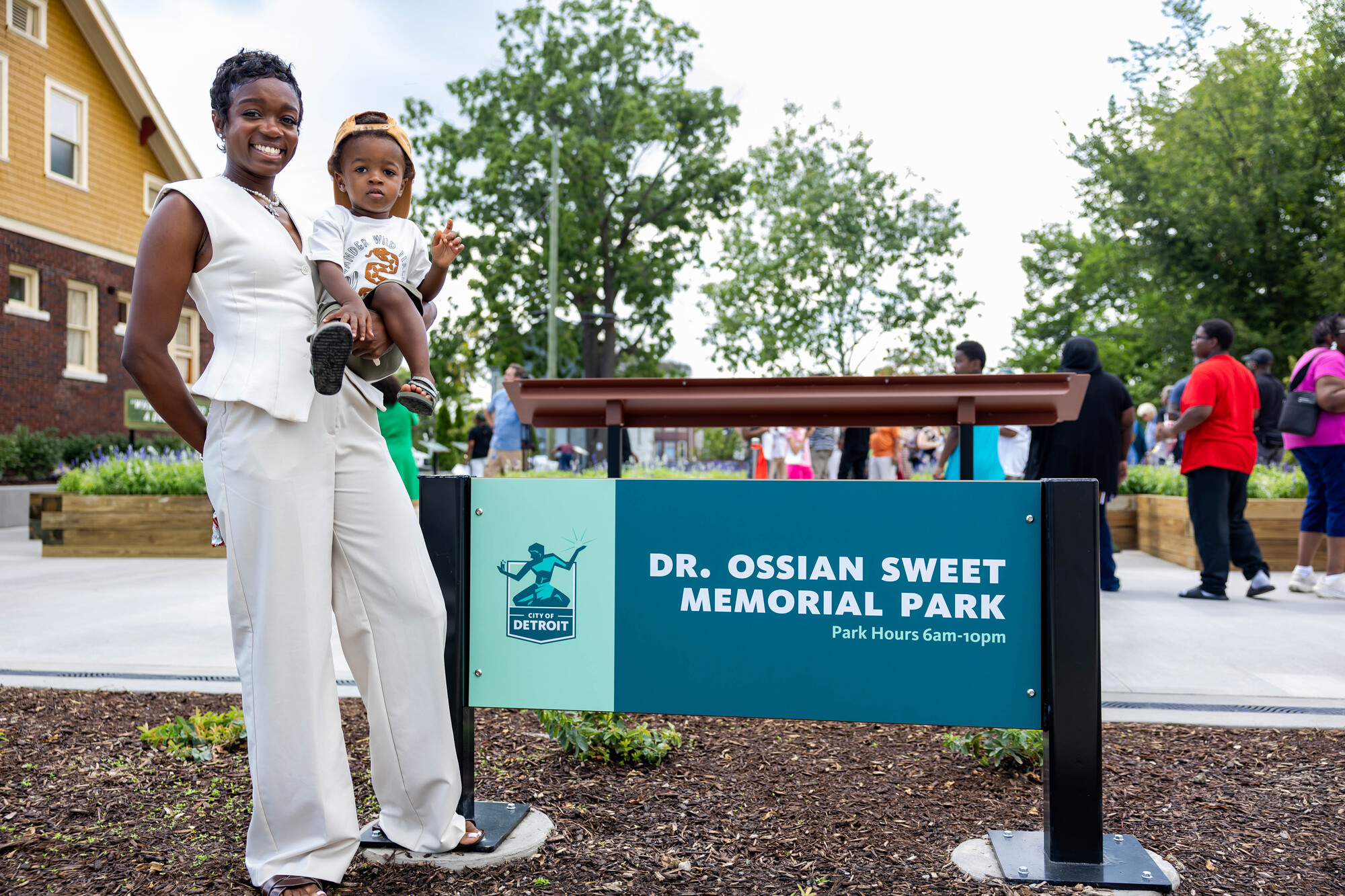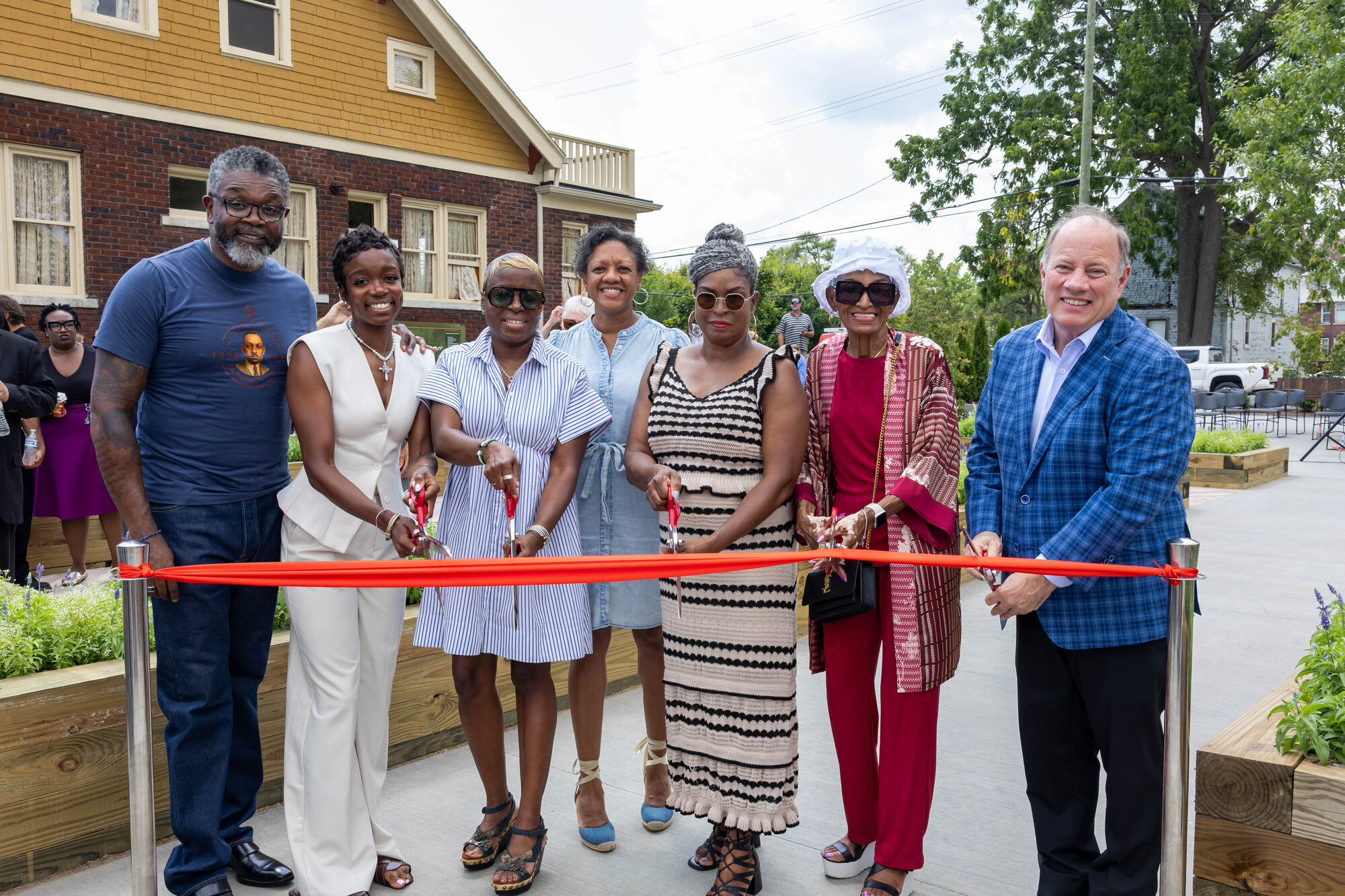City, community honor the legacy of Dr. Ossian Sweet with opening of new educational park next to his home
- Educational installations at memorial park tell the story of racial incident 100 years ago that helped lead to the dismantling of the nation’s discriminatory housing policies
- In September 1925, Dr. Sweet, an African American physician, and his family were descended upon by an angry mob after the moved into an all-White neighborhood
- Park is part of a larger effort by the city and others to preserve this important piece of Black history on Detroit’s Garland Street
Mayor Mike Duggan joined with family members of Dr. Ossian Sweet, community members and other officials to unveil the newly completed Dr. Ossian Sweet Memorial Park.
The park tells the story of the Sweet family, which was African American, after they moved into the then all white neighborhood one hundred years ago. In September 1925, shortly after they moved in, occupants of the Sweet Home defended themselves against an angry mob of hundreds that surrounded the house, firing shots and killing one of the agitators. This led to a murder trial that legendary defense attorney Clarence Darrow used to take on the issue of a person’s right to defend their own home, as well as the nation’s racially discriminatory housing policies, which were later overturned.
The City’s General Services Department has spent the last few years designing and building the park next to Dr. Sweet’s family home in advance of the 100th anniversary.
"The Ossian Sweet House and the grounds around it represent one of the most important pieces of Black history in this country, and now this beautiful new plaza will allow future generations understand and appreciate the profound impact Dr. Sweet and his family made,” said Mayor Duggan. “I’m so proud of the work of our General Services Department to create this space.”

Mayor Mike Duggan with Dr. Ossian Sweet's niece, Jackie Spott, photo courtesy City of Detroit.
Park brings history to life
This $1 million memorial park project, funded by America Rescue Plan Act (ARPA), transformed lots next to Dr. Sweet’s home on Garland St. into a public space that commemorates and memorializes the history and legacy of the Sweet family and the events that unfolded in 1925.
The City of Detroit’s General Services Department’s Landscape Design Unit were intentional about telling the historic accounts of that deadly night as well as the trials and tragedies that followed through symbolic designs and interpretive signage. The wood-style pavers evoke a feeling of stepping into a home. The planter boxes in the park represent the foundations of neighboring homes when the Sweet family moved in September 1925.
“The Dr. Ossian Sweet Memorial Park stands as a powerful reminder of courage in the face of injustice and the enduring fight for equality,” said Director of City of Detroit General Services Crystal Perkins. “May this park inspire all who visit to stand for what’s right and fight for equality.”

As a tribute to the roots the Sweet family had hoped to plant when moving into their Garland St., home, the memorial park features memorial trees to honor the 11 people in the home when shots were fired: Dr. Sweet, his wife Gladys, Dr. Sweet’s two brothers and several friends. Two strong elm trees are at the entrance of the park representing Dr. Ossian Sweet and Gladys Sweet and a large central legacy oak tree represents the future that would never come to be for their daughter Iva. Iva Sweet was just a few months old when the historical event took place and died at two years old from tuberculosis.
Dr. Sweet’s home is owned and operated by the Ossian H. Sweet Foundation and recently underwent a restoration project to open as a public museum. The home is also listed on the National Register of Historic Places and is a registered Michigan State Historical Site.
“At 10 years old, after learning the history my childhood home contained, I promised my mother I would make sure the world knew what Dr. Ossian Sweet and his family did in 1925,” said Daniel Baxter, founder and CEO of Ossian H. Sweet Foundation. “With this ribbon cutting, that promise is fulfilled. Now, the world can be enriched by the legacy of Dr. Ossian Sweet. I’m deeply grateful to Mayor Duggan for his efforts and honoring the history that forever changed the corner of Garland and Charlevoix.”

Neighboring home renovations are also underway to preserve Dr. Sweet and family’s history
In addition to the new plaza and modifications made to Dr. Sweet’s family home, the City’s Housing & Revitalization Department is renovating three vacant homes immediately across the street from the Sweet Home, as well as one flanking the opposite end of the park. The homes are being restored to match the style of the time in 1925, creating a much larger historical landscape to honor Dr. Sweet’s family legacy.
“The entire team has a deep respect for the importance of the work they are doing on these homes,” said Rico Razo. “We want to capture the look and the feel of homes of that era so people visiting the Sweet home and plaza can feel like they’ve stepped back in time.”
When they are completed, the homes will be sold to new families through the Detroit Land Bank.
“The Detroit Land Bank has helped to bring more than 12,000 vacant homes back to new life, but none have the deep historical significance as these homes on Garland Street,” said DBLA Director Tammy Daniels. “We can’t wait to see these beautifully restored homes filled with families and children as they were a century ago.”